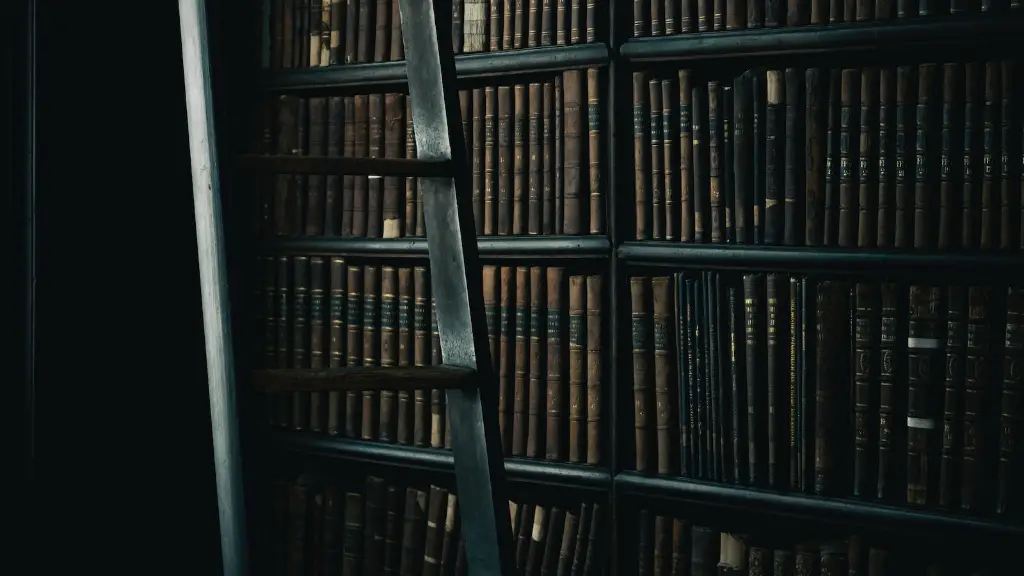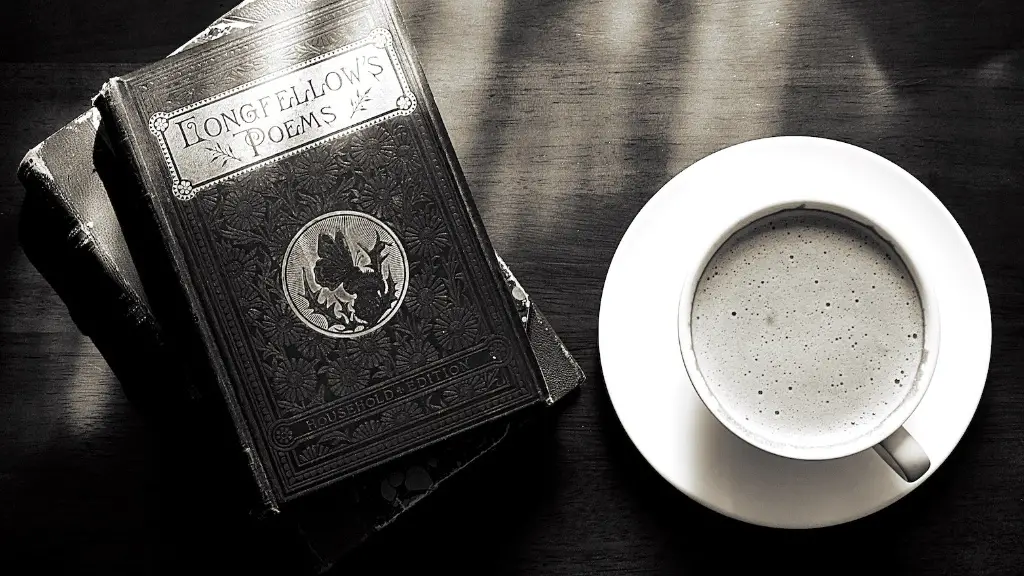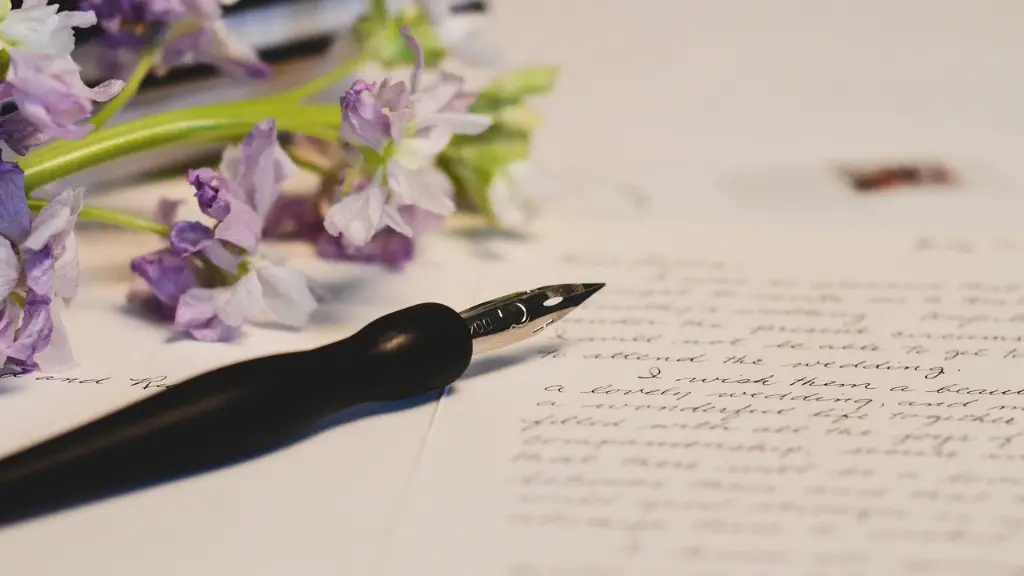Conceit is a style of writing which has been popular in poetry for centuries. It is an intentional exaggeration or comparison of ideas, expressions, words and objects, for the purpose of conveying intensity and emotion. Often it stretches an image or metaphor beyond the bounds of reality. It is an expressive technique which can add a lot of texture and flavor to a poem.
At its core, a conceit is simply a sweeping comparison. It requires the writer to expand on ideas, to think creatively and to take risks in stretching language and imagination. The comparison must be vivid and exciting, to capture the reader’s attention. The best conceits are often humorous and unexpected. This type of writing is typically associated with the Baroque period of poetry, with authors such as John Donne using it to great effect.
One of the most common forms of conceit is the ‘extended metaphor’. This is when two seemingly unrelated things are compared in a vivid and surprising way. John Donne famously wrote a poem comparing death to a ‘door of life’. In this poem, the metaphor of death as a door is used to explore philosophical ideas surrounding mortality and eternity.
A variation of the extended metaphor is the ‘metonomic conceit’. This occurs when one thing is described by referring to another, related thing. For example, ‘The sky is a blanket of stars’ is a metonomic conceit. Here the sky is described by its contents – the stars. The poet is trying to convey the vastness of the night sky by making it something more tangible and familiar – a blanket.
The conceit of ‘opposites’ is also very popular in poetry. Here, two opposite ideas or themes are explored in a surprising and meaningful way. This can be an effective tool in expressing complex emotions and ideas. An example of this is William Blake’s poem ‘A Poison Tree’, in which he uses the natural opposites of life and death to explore themes of anger and revenge.
The conceptual conceit is a particularly challenging type of writing. It requires the poet to merge two seemingly unrelated ideas, forming a unique concept. This can be extremely challenging for the poet, as it requires combining two seemingly divergent concepts. John Keats famously wrote a poem about the concept of time, comparing it to an ancient tree. This type of conceit is often used to explore philosophical or existential ideas.
Role of the Poet
The poet is the main protagonist in conceit poetry. It is the poet’s role to construct and complete the conceit, to make it meaningful and entertaining. It is a challenging art-form, as the poet must bridge the gap between two seemingly unrelated things. He or she must be able to think deeply, imaginatively and with precision.
It is also important that the poet is able to craft the conceit so that it is accessible to the reader. This means making sure it is clear, logical and evocative. Otherwise, the conceit can become confusing and obscure. The aim is to create a language that engages the reader, that takes them on a journey of exploration.
The poet also needs to be sensitive to the way the conceit is received by the reader. It is important to create a balance between innovative and surprising imagery, and writing which is clear and understandable. Conceit poetry is a form of expression that has the power to move and inspire, if done well.
Purpose of Conceit
The main purpose of conceit poetry is to explore ideas and feelings in a unique and creative way. By comparing seemingly unrelated things, the poet can stimulate the reader’s imagination and take them on a journey of discovery.
Conceit also has the power to evoke emotion in the reader. By using vivid imagery, the poet can create powerful mental images that bring the conceit to life. It can be a great tool for exploring complex emotions, as it allows the poet to express them in an evocative and profound way.
Conceit poetry also has the ability to make a statement and to express a point of view. By making comparisons between dissimilar items or ideas, the poet can make a powerful statement about something, without directly addressing it. This can be a powerful tool for writers who wish to explore difficult or controversial topics.
Effects of Conceit
Conceit poetry is a powerful and evocative form of writing which has the potential to move and inspire its readers. However, it is important to consider the potential effects it may have on the reader.
For example, readers may find a conceit poem confusing or difficult to understand. This can have the effect of alienating some readers, who may not be engaged by the creative imagery or philosophical ideas. On the other hand, those who appreciate the complexity of the conceit may find the poem rewarding and thought-provoking.
Conceit also has the potential to be disconcerting or even disturbing. By combining two seemingly unrelated ideas, the poet can create ideas or images which may be unsettling or uncomfortable to some readers. This kind of poem has the power to shock, or even provoke outrage. It is important for poets to consider this when writing conceit poetry.
Choosing Appropriate Topics
Conceit poetry is a powerful and evocative tool for expressing ideas and emotions. However, it is important for poets to consider the appropriateness of the topics they are exploring.
It is important for poets to be sensitive to the potential implications of the topics they are exploring. They should think about how the poem will be perceived by readers, and the impact it may have on them. They should also be conscious of any potentially offensive language or imagery.
Poets should also consider the scope of the conceit. They should make sure that the comparison is not too vague or broad, as this can make the poem difficult to understand. Finally, they should make sure that the conceit they are using is appropriate to the sentiment they are expressing.
Finding Inspiration
It can sometimes be difficult for poets to come up with ideas for conceit poems. One of the best ways to get started is to look for inspiration in other art forms. For example, music and films can provide great sources of inspiration for conceit poems.
Reading other poet’s work is also a great way of finding inspiration. It can be helpful to read work from different eras, genres and cultures in order to get fresh perspectives and ideas. Researching different topics can also be a great way to find inspiration.
Finally, it can be helpful to take a break from writing and to give the brain some time to process and synthesise ideas. Taking a walk, or doing something creative such as drawing or painting can be a great way to spark creativity and come up with ideas for conceit poems.
Crafting the Poem
Once the poet has an idea in mind, they must then begin to craft it into a poem. This can be a challenging process, as the poet must be able to express the conceit in a way that engages the reader.
The poet should consider the structure of the poem and the word choice. They should strive to create vivid imagery, similes, and metaphors in order to effectively convey the conceit. It is also important to consider the rhythm of the poem, as this can have a big impact on the way in which the reader responds to the writing.
In order to make sure the poem accomplishes all of these things, the poet may need to go through multiple drafts before arriving at the finished article. It is important to take the time to experiment with different structures, words and ideas in order to make sure the poem is as effective as possible.





